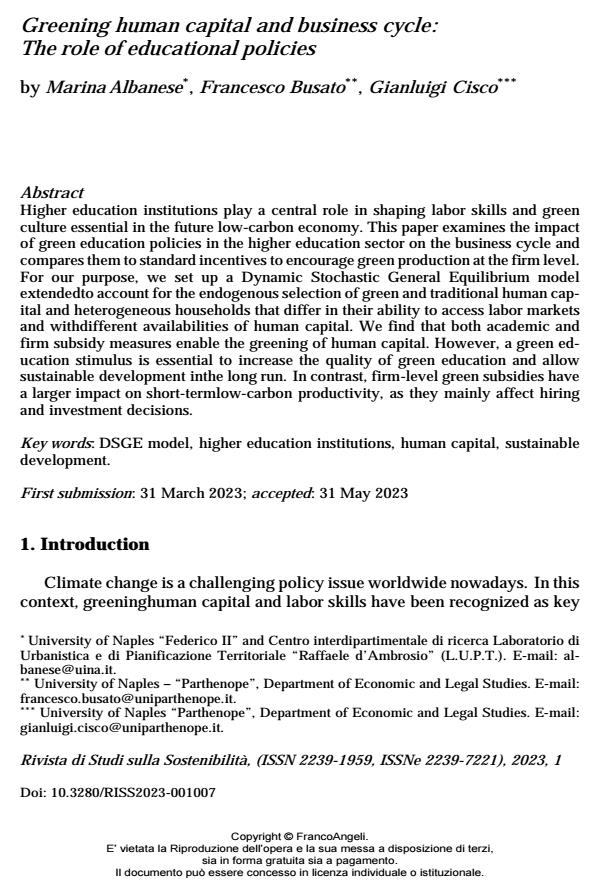Greening human capital and business cycle: The role of educational policies
Titolo Rivista RIVISTA DI STUDI SULLA SOSTENIBILITA'
Autori/Curatori Marina Albanese, Francesco Busato, Gianluigi Cisco
Anno di pubblicazione 2023 Fascicolo 2023/1
Lingua Inglese Numero pagine 10 P. 129-138 Dimensione file 139 KB
DOI 10.3280/RISS2023-001007
Il DOI è il codice a barre della proprietà intellettuale: per saperne di più
clicca qui
Qui sotto puoi vedere in anteprima la prima pagina di questo articolo.
Se questo articolo ti interessa, lo puoi acquistare (e scaricare in formato pdf) seguendo le facili indicazioni per acquistare il download credit. Acquista Download Credits per scaricare questo Articolo in formato PDF

FrancoAngeli è membro della Publishers International Linking Association, Inc (PILA)associazione indipendente e non profit per facilitare (attraverso i servizi tecnologici implementati da CrossRef.org) l’accesso degli studiosi ai contenuti digitali nelle pubblicazioni professionali e scientifiche
Higher education institutions play a central role in shaping labor skills and green culture essential in the future low-carbon economy. This paper examines the im-pact of green education policies in the higher education sector on the business cy-cle and compares them to standard incentives to encourage green production at the firm level. For our purpose, we set up a Dynamic Stochastic General Equilibrium model extended to account for the endogenous selection of green and traditional human capital and heterogeneous households that differ in their ability to access labor markets and with different availabilities of human capital. We find that both academic and firm subsidy measures enable the greening of human capital. How-ever, a green education stimulus is essential to increase the quality of green educa-tion and allow sustainable development in the long run. In contrast, firm-level green subsidies have a larger impact on short-term low-carbon productivity, as they main-ly affect hiring and investment decisions.
Parole chiave:DSGE model, higher education institutions, human capital, sustaina-ble development.
Marina Albanese, Francesco Busato, Gianluigi Cisco, Greening human capital and business cycle: The role of educational policies in "RIVISTA DI STUDI SULLA SOSTENIBILITA'" 1/2023, pp 129-138, DOI: 10.3280/RISS2023-001007